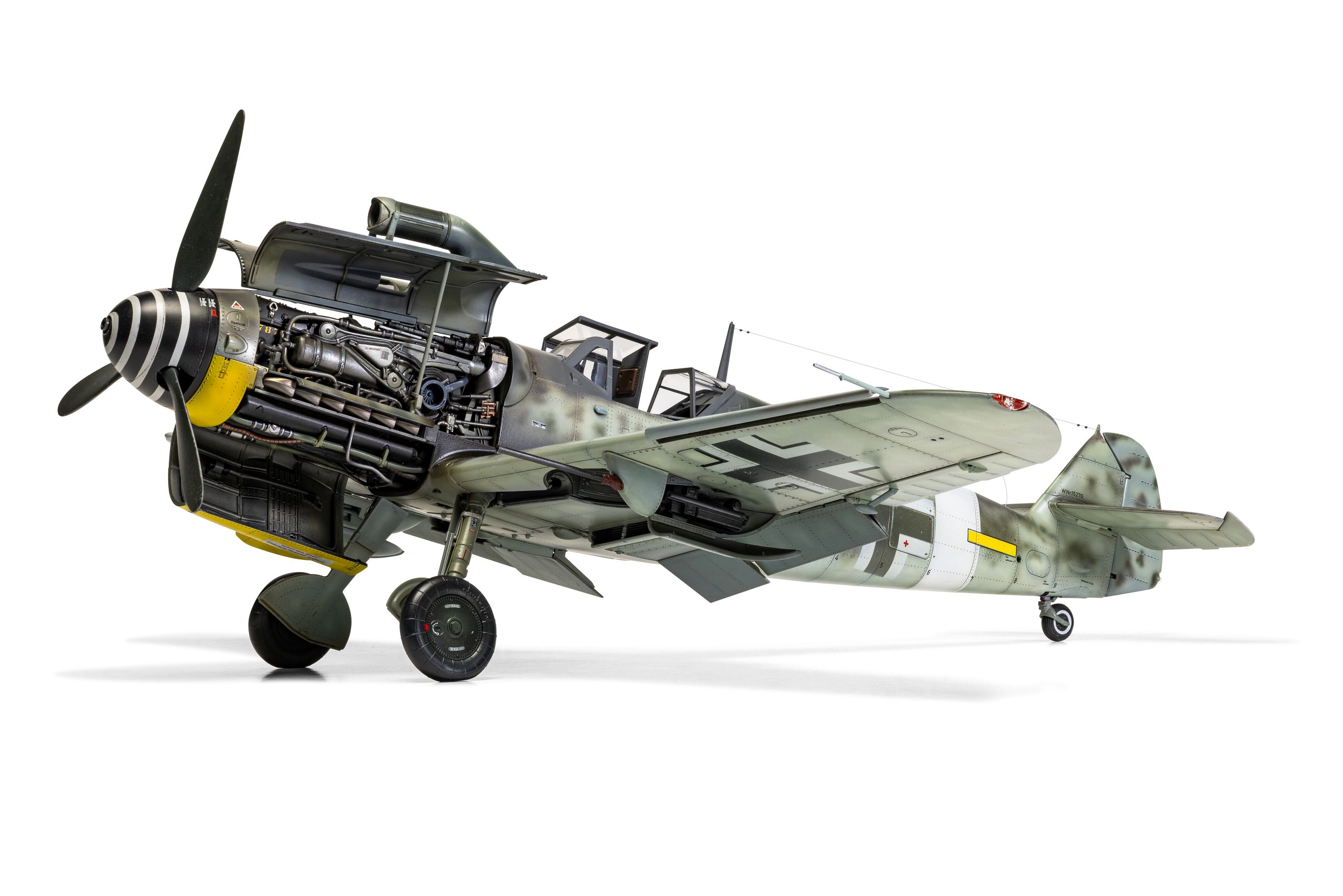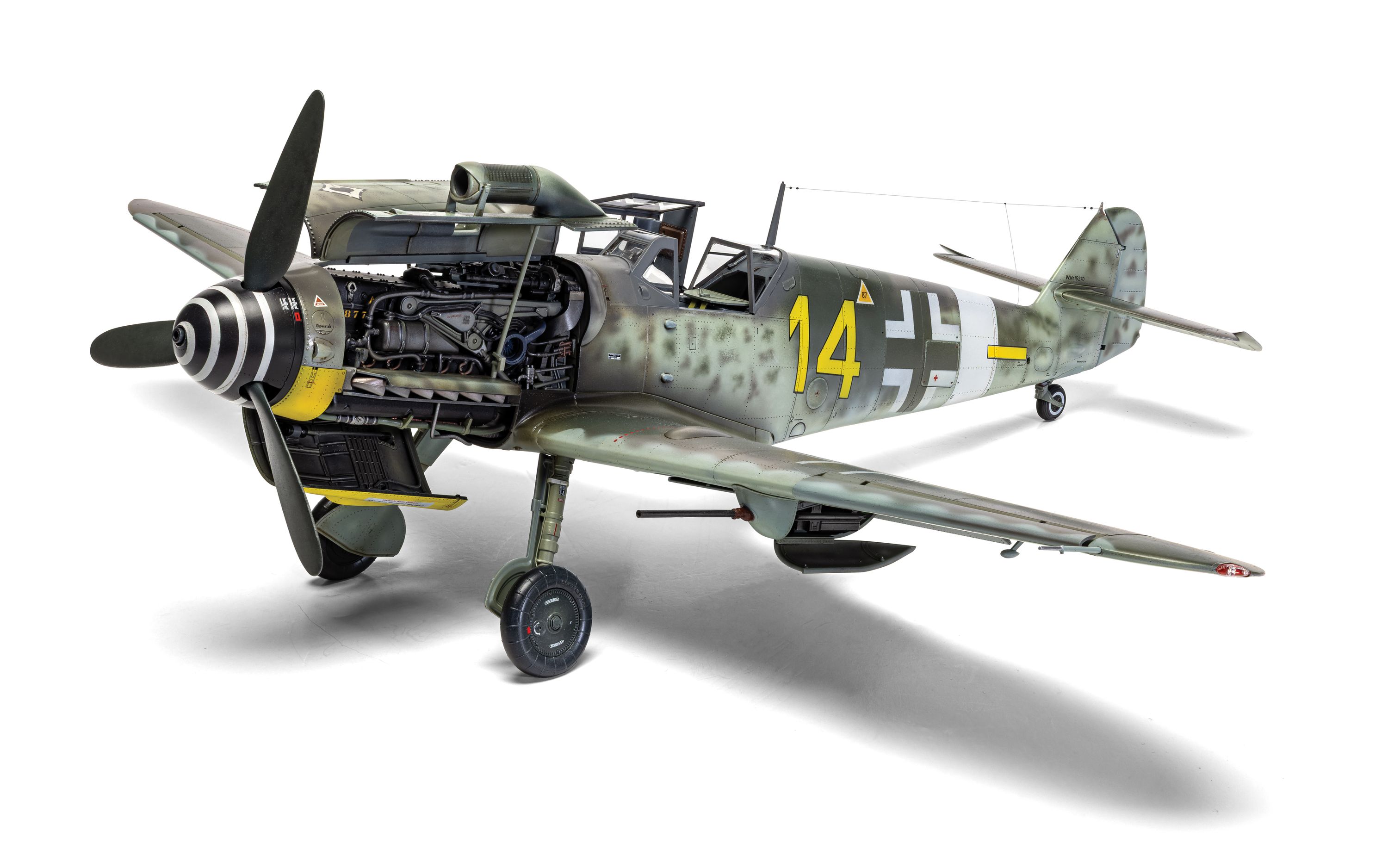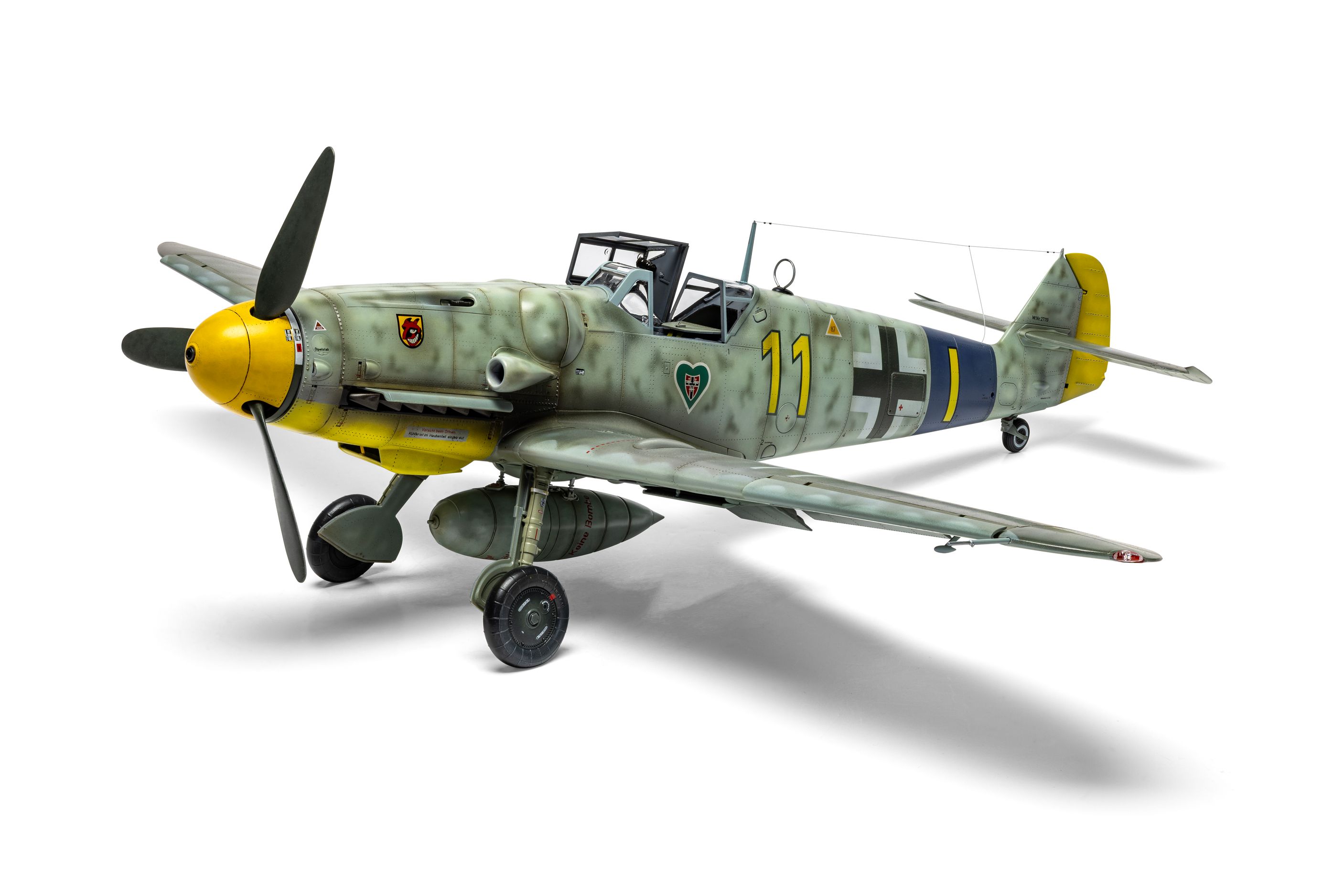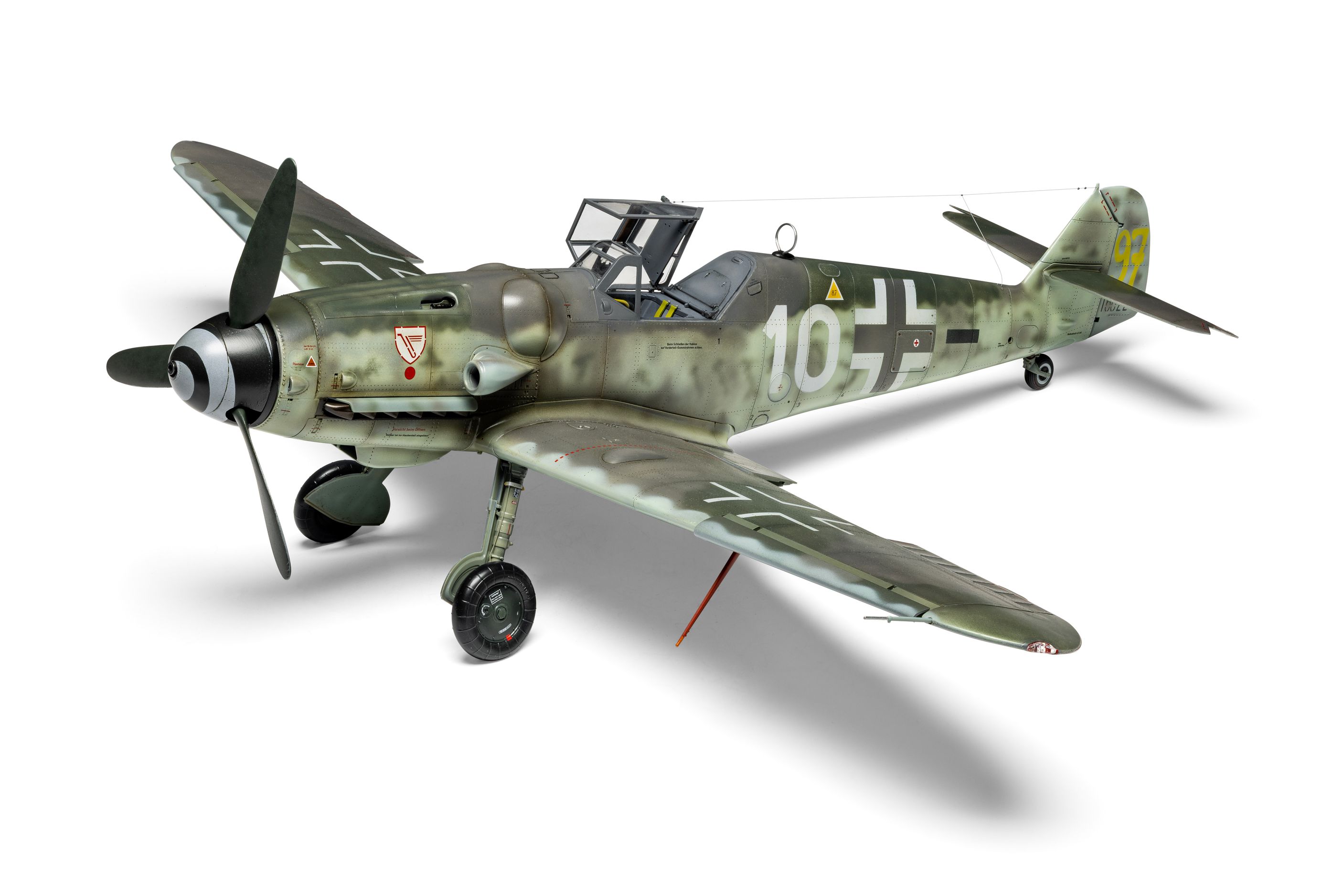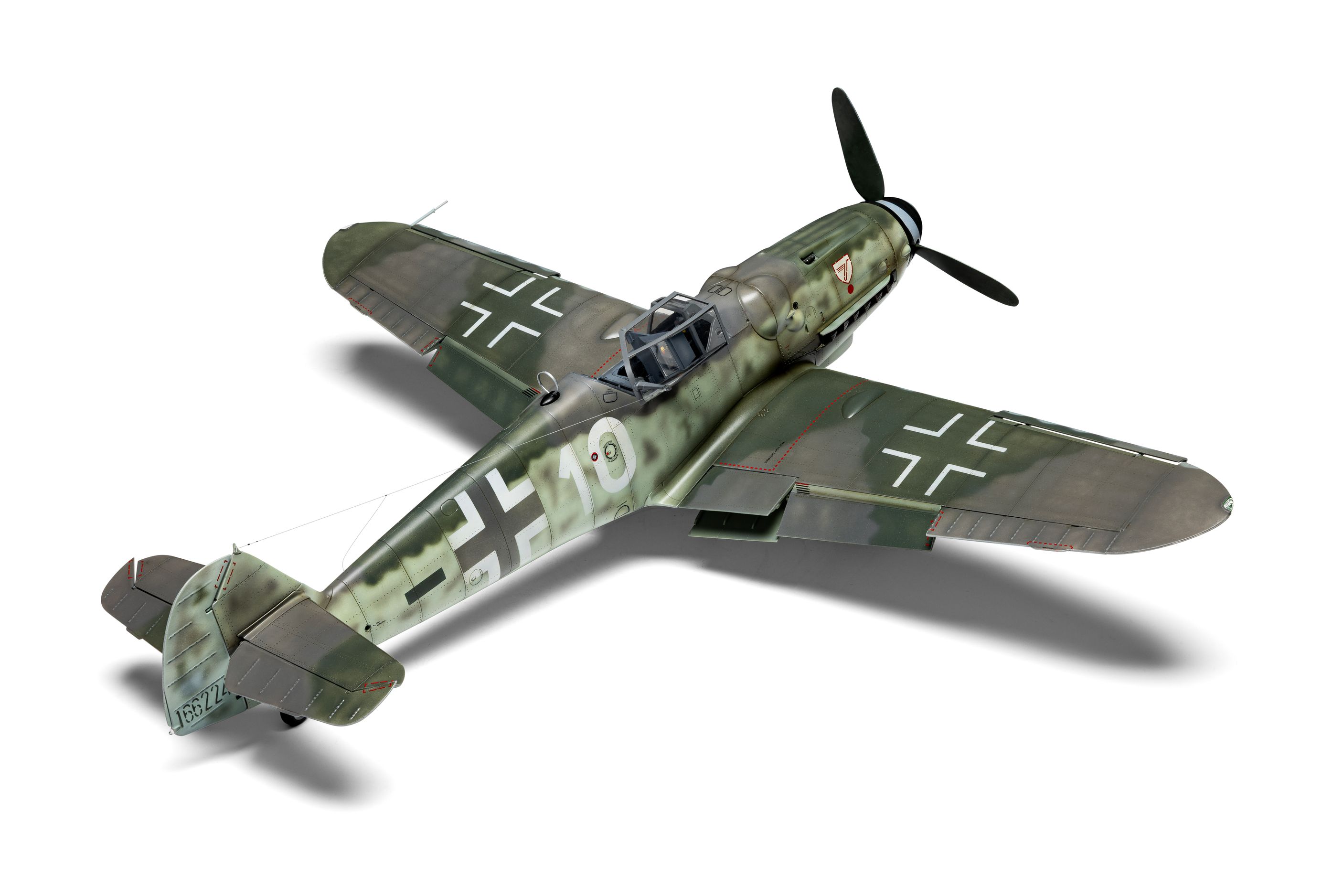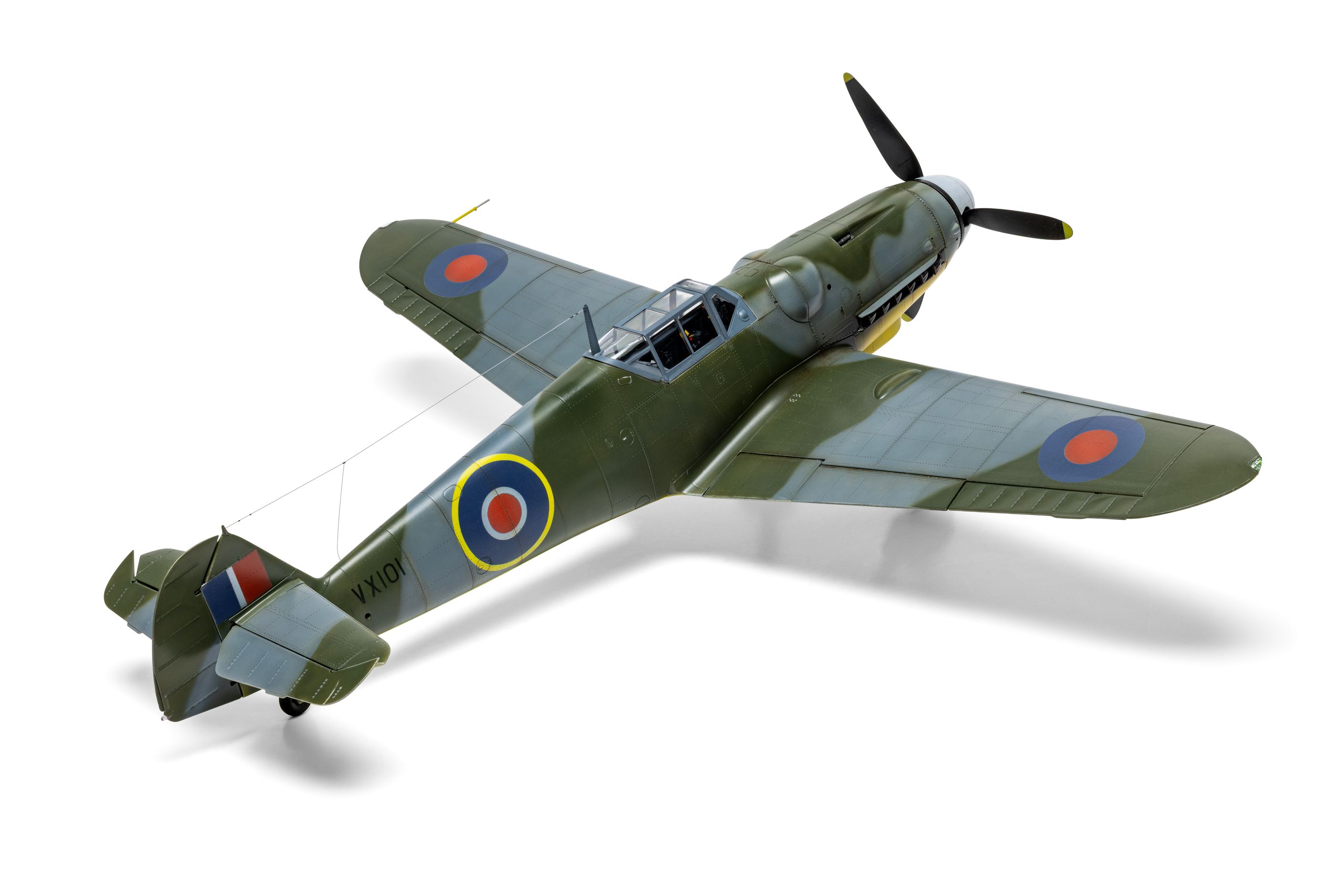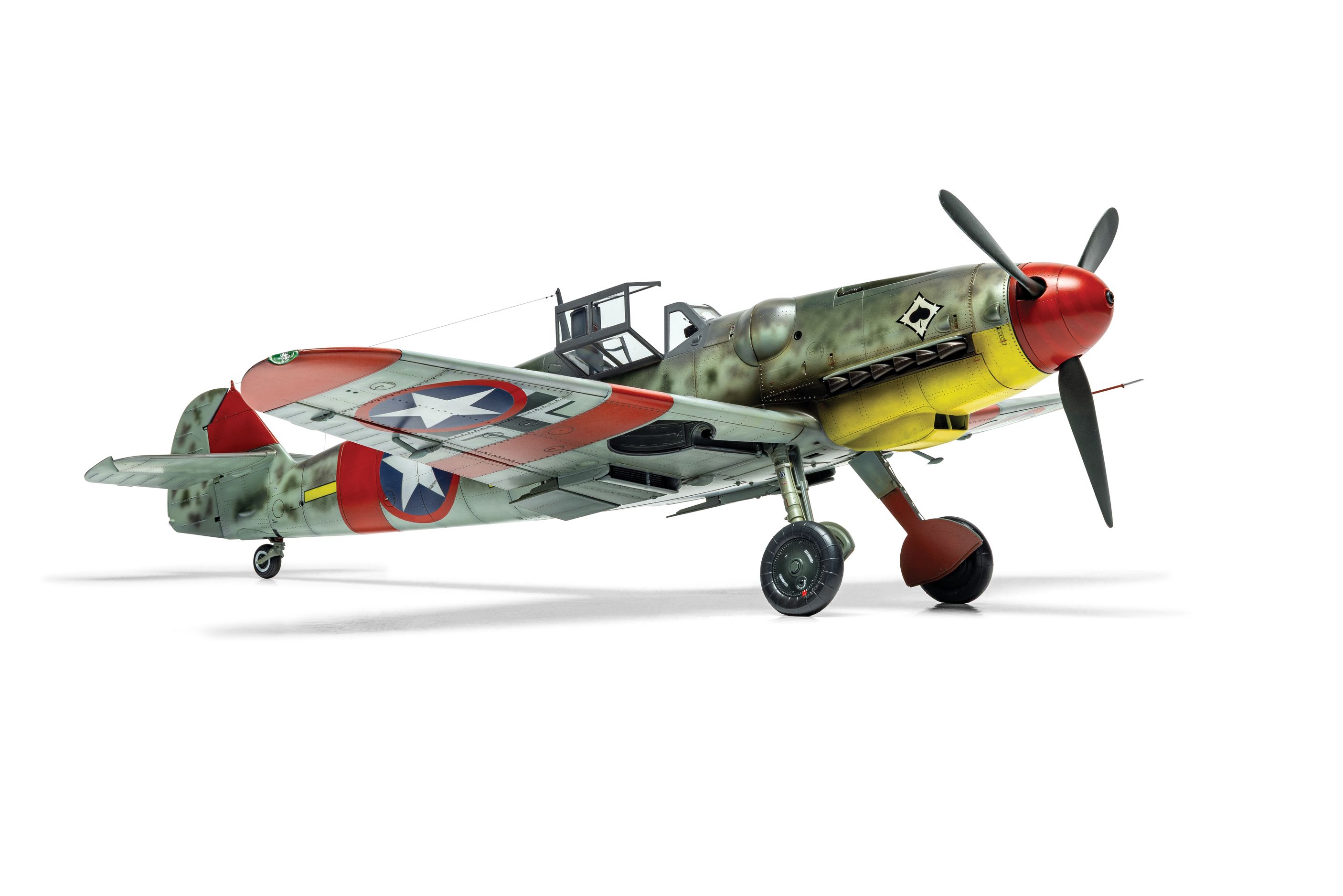The Tyrant of Scale: Airfix’s Monumental 1:24 Messerschmitt Bf 109G-5/6
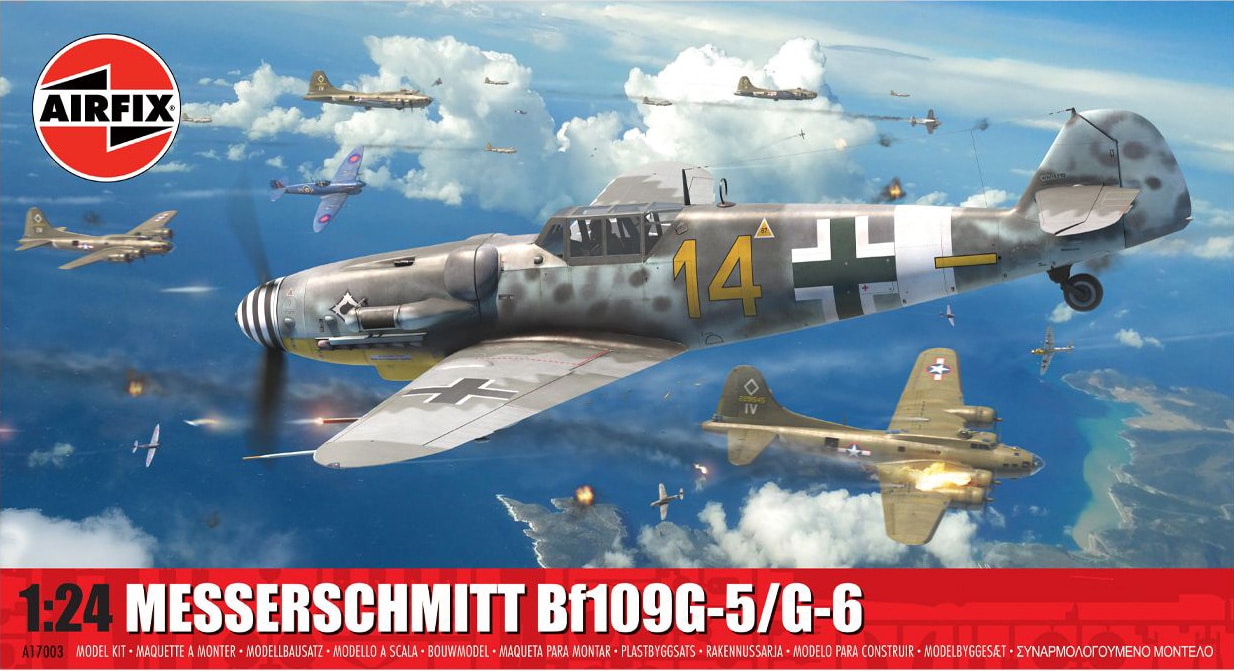
The Tyrant of Scale: Airfix’s Monumental 1:24 Messerschmitt Bf 109G-5/6 – A Deep Dive into the Luftwaffe’s Final Apex Predator
Expert review of the Airfix 1:24 scale Messerschmitt Bf 109G-5/6 (A17003) model kit. Detailed technical analysis of the 405-part mega-kit, focusing on the fully detailed DB605 engine, modular G-5/G-6 options, “Beule” fairings, and armament. Explore the history of the “Gustav,” its combat role from the Eastern Front to the Mediterranean, and the legacy of aces like Erich Hartmann. The definitive technical modeling announcement for 1/24 aircraft enthusiasts.
As an expert modeler, I have seen trends come and go, but the arrival of a new, cutting-edge kit in the monumental 1:24 scale is always a seismic event. This particular announcement from Airfix—the Messerschmitt Bf 109G-5/6 (Item A17003)—is set to redefine the standards for large-scale World War II fighter aircraft. The Bf 109 is perhaps the most modeled aircraft in history, but rendering the potent G-series “Gustav” in this massive scale, with the meticulous detail Airfix promises, transcends a simple kit release; it is the creation of a miniature monument to one of the most effective, yet fiercely challenged, fighters of the conflict.
The 1:24 scale is not merely larger; it is transformative. It allows engineering precision that is simply unattainable in 1/48 or 1/72. With a reported 405 parts in this set, Airfix is not just offering an aircraft model, but a fully exposed, technical diagram of the legendary fighter. This is a model designed for the expert who demands authenticity, historical depth, and the opportunity to showcase the raw mechanics of the Daimler-Benz powered apex predator. This comprehensive article will delve into the astonishing technical specifications of the kit, explore the critical operational history of the Gustav, and discuss why the Bf 109G-5/6 variants were so pivotal to the desperate defensive battles fought by the Luftwaffe in the middle stages of the Second World War.
Part I: The Engineering Mastery – Airfix’s Technical Manifesto in 1:24
The Bf 109G-5/6 represents the pinnacle of the fighter’s mass-produced development, characterized by necessary—if sometimes awkward—upgrades in firepower. Airfix has clearly approached this project with the respect and exhaustive research the subject demands, particularly in translating the complexities of the ‘Gustav’ into a 405-part structure.
The Heart of the Beast: Exposed Engine Detail
In 1:24 scale, the engine ceases to be a simple detail and becomes the centerpiece of the model. Airfix has delivered on this expectation by engineering a fully detailed DB605 engine that can be displayed or hidden. The Daimler-Benz DB605 engine, which gave the Gustav its raw, impressive power, is rendered with all its essential components. This allows the modeler to pose the kit not just as a static flying machine, but as a maintenance scene, showing the complex wiring, plumbing, and mechanical intricacy of the inverted V12.
Furthermore, the model provides extraordinary modularity around the engine bay: the engine cowlings and oil cooler can be posed in either the open or closed position, providing a seamless transition between a display of the external sleekness and an exposé of the internal mechanics. The kit also includes a choice of two types of engine cowlings (MTT and Erla), which is a subtle nod to the dedicated accuracy required in the 109 modeling sphere, reflecting manufacturing differences across production sites. This technical flexibility elevates the kit from a simple building exercise to a dynamic historical diorama in a box.
The ‘Beule’ and Optional Armament
The distinguishing feature of the G-5 and G-6 variants—and a focal point of this kit—is the characteristic bulging fairings, affectionately known as the “Beule” (German for “bump” or “bruise”). These fairings were necessitated by the upgrade of the synchronized nose armament from the small-caliber 7.92mm MG 17 machine guns to the larger, more potent 13mm MG 131 heavy machine guns. Airfix captures the shape and integration of these fairings with precision, a key aerodynamic feature that slightly degraded the 109’s sleek lines but exponentially increased its short-range destructive power.
Crucially, the kit’s armament options allow for specific combat configurations (Rüstsätze). The modeler can choose to fit the aircraft with the optional under-wing cannon “Gondolas,” which housed a pair of potent 20mm MG 151/20 cannon. While these significantly increased the aircraft’s punch against heavy bombers, they came at the cost of speed and maneuverability. The detailed inclusion of the nose armament behind the engine, complete with machine guns, gun mounts, and ammunition boxes, means the modeler can fully display the layered complexity of the fighter’s destructive core.
Advanced Molding and Detail Flexibility
Airfix has leveraged modern tooling, specifically slide moulding, to capture the fine surface detail on elements like the engine cowlings, fuselage, exhausts, and gun barrels. This technique ensures sharp, crisp panel lines and minimizes seam lines on complex parts, which is vital in a large scale where flaws are easily magnified.
Internal cockpit detail, a canvas for super-detailers in this scale, is exceptional. The kit allows for the canopy to be posed open or closed and includes two canopy types, reflecting the variations seen on the G-5/6, often the standard framed canopy and the later, more streamlined Erla Haube canopy. Moreover, specific detail parts like rudder pedals, gunsights, trim wheels, and instrument panels ensure the ‘office’ environment is as rich as the exterior.
Finally, the kit boasts mechanical flexibility, a feature beloved by modelers seeking dynamic presentation: ailerons, elevators, and the rudder can be offset, while the radiator and wing flap position can also be customized. This allows the builder to inject a sense of life and weight into the finished model, portraying it either taxiing or sitting ready for the next scramble.
Part II: The Gustav’s Genesis – From Fleet Defender to Heavy Hitter
The Bf 109G, or “Gustav,” was the most prolifically produced variant of the Messerschmitt fighter, seeing over 12,000 examples manufactured. Its existence was a product of necessity, driven by the escalating air war and the constant push for more speed, higher altitude performance, and increased firepower.
Evolution of Power: The DB605
The Gustav emerged directly from the earlier Bf 109F (“Friedrich”), which had achieved near-perfect aerodynamic efficiency using the DB601E engine. However, by 1942, the Luftwaffe needed more. The DB605 engine was the answer. Developed for easier mass production than its complex predecessor, the 605 increased the displacement and compression ratio of the inverted V12, successfully raising the power output to a respectable 1,455 bhp. This burst of power was essential for combating the newer, heavier Allied fighters, such as the Spitfire Mk.IX, and for intercepting the increasing formations of high-flying American heavy bombers.
The adoption of the DB605 led to the first of the Gustav family, the Bf 109G-1. This variant’s crucial role was as a high-altitude interceptor, requiring a pressurized cockpit to protect the pilot at extreme altitudes. This meant sealed canopy glazing and an engine-driven compressor for cabin air, features that Airfix has carefully included in the G-5 option parts. The G-5 itself continued this high-altitude mandate, combining the pressurized cockpit with the increased firepower of the 13mm MG 131s, making it a formidable, though limited, high-level threat.
The Firepower Imperative: Enter the G-6
While the G-5 focused on altitude, the G-6 became the definitive, general-purpose workhorse. It dropped the complex pressurization equipment but retained the improved firepower, becoming the most widely used German fighter of the mid-to-late war period. The G-6 was a reflection of the changing operational priorities: the need to intercept the formidable daylight raids of the US Army Air Forces (USAAF) meant the Bf 109 had to be adapted for the Zerstörer (destroyer) role, which required the high-caliber nose guns and the frequent use of the under-wing cannon gondolas.
This constant addition of weight, armament, and equipment—the famous Rüstsatz kits (field-conversion kits)—made the Gustav a much heavier, more cumbersome aircraft than the sleek Friedrich. However, it was a necessary compromise. The G-6’s sheer versatility meant it was deployed across all major fronts, from the skies over the vast Russian plains to the desperate, swirling dogfights above the sun-drenched Mediterranean islands.
Part III: Combat and Captures – The Gustav’s Dual Legacy
The history of the Bf 109G-5/6 is a story of relentless combat, celebrated individual achievements, and crucial, often secretive, intelligence operations. Airfix’s inclusion of five distinct marking schemes allows modelers to tap directly into these compelling historical narratives.
The Aces of the Eastern Front
The Gustav was the tool of the highest-scoring fighter pilot in history, Erich “Bubi” Hartmann. Hartmann flew the Bf 109G (primarily the G-6) almost exclusively on the Eastern Front, achieving an astonishing 352 aerial kills—a feat that remains statistically unmatched. His legendary success was not only due to his skill but to the reliability and effectiveness of the G-6 in the high-intensity, low-altitude battles against the Soviet Air Force.
Hartmann was famous for his simple motto: “See-Decide-Attack-Break.” He preferred to use the element of surprise, waiting until the very last moment to open fire at near point-blank range, guaranteeing a kill with the G-6’s devastating 13mm and 20mm armament before rapidly escaping. Modeling one of Hartmann’s distinctive G-6s (often marked with a black tulip nose marking) is to replicate an aircraft flown by the ultimate embodiment of fighter piloting expertise. The sheer volume of G-6s produced meant they bore the brunt of the fighting in the East, from the skies of the Kursk Salient to the final defense of Berlin, becoming synonymous with the desperate courage of the Jagdflieger.
The Mediterranean and the Allied Intelligence Coup
The G-6’s presence in the Mediterranean was also crucial. Early in its deployment, it equipped major fighter wings like JG 27, 51, 53, and 77 in the sun-baked, dusty theatre of operations. The Airfix kit explicitly features a scheme for a Bf 109G-6/Trop, ‘Yellow 14’ of 6./JG53 in Sicily, July 1943. The ‘Trop’ (Tropical) variants featured filters fitted over the air intakes to prevent sand and dust from degrading the sensitive DB605 engine, a key detail that will challenge the modeler’s painting and weathering skills.
Perhaps the most fascinating scheme offered by the kit is that of the captured G-6. Scheme C represents VX101 of No. 1426 Flight, RAF Collyweston, England, April 1944. Known informally as the “Enemy Aircraft Circulation Unit,” No. 1426 Flight, or the “Rafwaffe,” was responsible for evaluating captured German aircraft.
The captured Bf 109s, often flown into Allied hands by defecting pilots or recovered largely intact, provided invaluable intelligence. Allied pilots were able to test the German fighter’s actual performance envelope, discover its vulnerabilities, and develop effective countermeasures. A captured Bf 109G-6, stripped of its swastika and repainted in RAF dark green and ocean grey over medium sea grey, often with bright yellow bands for identification, stands as a stunning testament to this intelligence war. Recreating this captured aircraft—a German design wearing British colors—provides a visually striking and deeply historical subject that moves beyond the typical Luftwaffe camouflage.
Conclusion: The Airfix 1:24 Bf 109G-5/6 – A Definitive Work
The Airfix 1:24 Messerschmitt Bf 109G-5/6 (A17003) is a statement piece. It represents a confluence of scale, engineering excellence, and historical significance that will make it a mandatory purchase for any serious 1/24 aircraft modeler or any enthusiast devoted to the Messerschmitt legacy.
From the fidelity of the fully detailed DB605 engine and the meticulous rendering of the “Beule” fairings, to the inclusion of both the pressurized G-5 and the versatile G-6 options, this kit demonstrates Airfix’s commitment to the modern modeling standard. With 405 components and the ability to pose virtually every major aerodynamic and mechanical surface—from offset control surfaces to open engine cowlings—the finished model is an interactive, museum-quality representation of the Luftwaffe’s iconic workhorse. This model is not a quick build; it is a deep, rewarding journey into the mechanics and history of the definitive World War II fighter. The Gustav, complex and deadly, has finally received the magnificent large-scale treatment it deserves.
Source: uk.airfix.com

